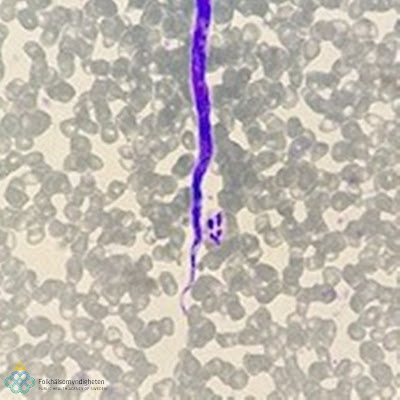Answer to Parasite Case of the Week 687: Loa loa
As noted by Florida Fan, @JuanCGabaldon, Idzi P, Ulrike E. Zelck, Priyanka Gupta, and others, the video clearly shows this to be a sheathed microfilaria, and the Giemsa smear shows the column of nuclei extending all the way to the tip of the tail, thus allowing us to make an identification of Loa loa. The patient's travel history (Gabon) also fits with this identification.
As Idzi P. mentioned, I like to teach my students that nuclei flow-a flow-a to the tip in Loa loa - a fun learning aid! Also check out this beautiful infographic by @cullen_lilley for an algorithm to differentiate the common human-infecting microfilariae.
Idzi P. further adds "These are by far the most beautiful images I have ever seen from what is definitely Loa loa microfilariae. I especially LOVE the video (second one) where the sheath is nicely visible!"
I agree - the video is amazing, and you should all check it out.
Idzi P. goes on note that "a Knott's concentration could be envisaged to obtain a quantitative result before treatment is started. Also a hematoxylin-based staining (like Carrazzi's hematoxylin staining) could be used to demonstrate the sheath more nicely (as Luis H. points out: Giemsa does not usually/reliably stain the sheath of microfilariae) and better show the positioning of the nuclei in the tail." This is the answer to my question regarding additional laboratory testing that is indicated. Treatment of Loa loa is quite complicated, and patients with more than 8,000 microfilariae/mL are at risk of fatal encephalopathy with treatment. Therefore, obtaining a parasite count is important for guiding therapy.
Thanks again to Dr. Ioana Bujila and the Public Health Agency of Sweden for sharing this beautiful case!






.JPG)
.JPG)
.JPG)
.JPG)




